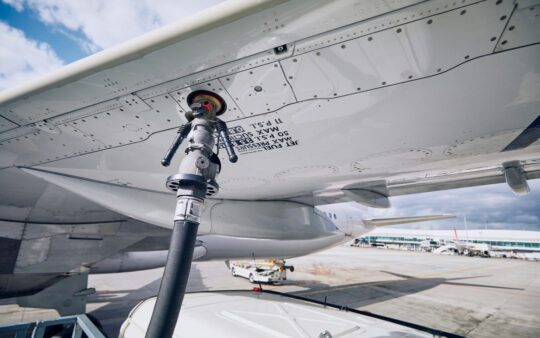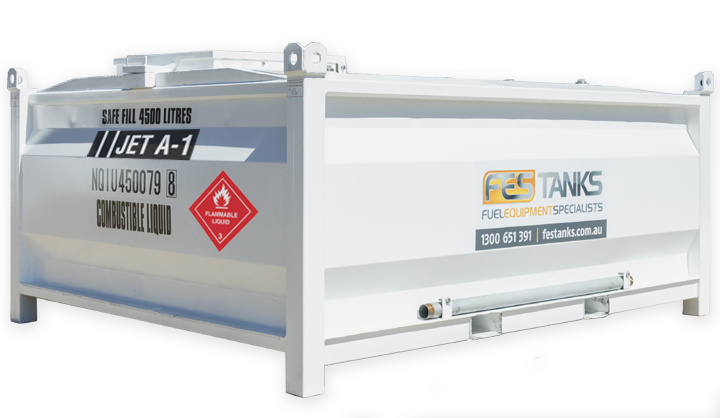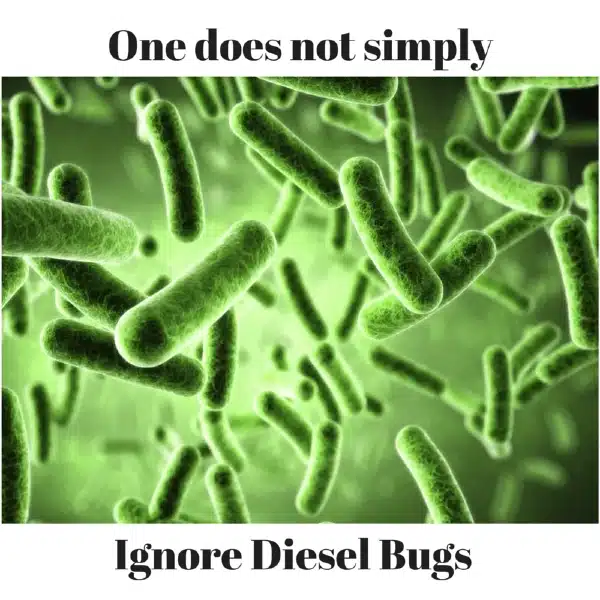Jet A1 fuel – what it is and top storage tips
Fuel security is a hot issue for Australia’s aviation industry. With 90 per cent of liquid fuel – including jet fuel – imported through long supply chains, supply is subject to geopolitical tensions, delays and quality issues.
The effect on price is predictable. Jet fuel prices in Australia are still well above pre-pandemic levels – causing a hit to the bottom line for aviation businesses and to the hip pocket for consumers.
The CSIRO is working with the aviation industry to develop new types of sustainable aviation fuel that will help reduce reliance on imports and lower prices, but in the meantime Jet A1 fuel is the most common fuel used in Australian turbine aircraft.
Given the cost of fuel makes up around a third of airline operating costs, getting Jet A1 storage right and minimising waste is an important part of sustainable operations for any aviation-based business.
What is Jet A1 fuel?
Jet fuel is a kerosene-based fuel similar to diesel and is the leading aviation fuel type for turbine-engine aircraft – from commercial jets to cargo aircraft, military airplanes and more. It is generally more stable and more widely available than avgas, with different properties that make it more suited to jet engines and to flying through different climactic conditions.
Because its exact composition varies, jet fuel is defined using performance specifications and requirements including freezing point and smoke point.
There are three main jet fuel varieties made from either unleaded kerosene (Jet A and Jet A-1) or a naphtha-kerosene blend (Jet B).
- Jet A has been used primarily in the United States since the 1950s. This fuel is developed to be heavier with a higher flash point and freezing point than standard kerosene. Both Jet A and Jet A1 have a flashpoint higher than 38 °C with an autoignition temperature of 210 °C.
- Jet A1 is the most used jet fuel worldwide. Jet A1 has a lower freezing point (-47° C) than Jet A (-40° C) so it is especially suitable for international travel through varying climates. This type of fuel also contains mandatory static dissipater additives that decrease static charges that form during movement.
- Jet B is a naptha-kerosene fuel with a uniquely low freezing point of -60° C, making it useful in extremely cold areas. It’s what’s known as a “wide cut fuel”, made from a blend of about 30% kerosene and 70% gasoline. However, Jet B’s lighter composition makes it more dangerous to handle and it has a low flashpoint. It is primarily used in northern Canada and Alaska, where the extreme cold makes its low freezing point necessary.
Contamination risks for Jet A1 fuel
Because of its kerosene base, Jet A1 fuel is less volatile than Avgas and can generally be stored for longer – particularly in the right conditions.
But it’s still vulnerable to common causes of fuel contamination.
- Water contamination: Free water in aviation fuel can lead to ice formation, filter blockages and engine failure. It can also allow microbial growth in fuel tanks, which can cause fuel spoiling and filter blocking. Acids generated by the microbes can even cause corrosion damage. Water can get into insecure storage tanks during transfer or through condensation, particularly if the structure of the tank provides natural collection points like baffles. The most common way of testing for water in fuel is to use a water detector tablet or capsule, which can indicate whether the water level is above or below 30 ppm, the maximum allowed limit.
- Particulates: Metals like copper react with jet fuel, causing serious issues and fuel instability even at very small concentrations. Rust in fuel storage tanks or fittings is another common source of particles that can eventually entering the fuel. This is why under Australian safety regulations, any part of a storage tank that could come into contact with jet fuel must be stainless steel.
- Microbes: Microorganisms found in jet fuels include bacteria, yeasts and fungi. As they grow, these organisms can form solid debris that can block and damage fuel filters. Some microorganisms also produce acids that can accelerate metal corrosion. Since most microorganisms need free water to grow, this kind of contamination is most commonly found anywhere fuel meets water.
- Incorrect fuel/misfuelling: Mixing aviation fuels can prove disastrous in terms of cost and safety. Jet A1 can cause engine failure quickly in an avgas-powered engine. The aviation industry uses a uniform marking code for fuel storage tanks as one way of protecting against grade mixing contamination and errors. Jet A1 tanks are clearly marked with two black bands.
Your Jet A1 fuel storage checklist
The good news is that getting storage right can help you make the most out of your Jet A1 fuel and keep your aviation business operating smoothly.
There are some simple things to look out for when choosing Jet A1 storage.
- Quality manufacture: Look for stainless steel for a long-lasting Jet A1 storage tank that will help keep your fuel safe. This will also reduce the risk of water contamination due to rusting that compromises tank integrity. F.E.S Tanks self-bunded aviation tanks have a 100% stainless steel inner tank and all fittings are also made of stainless steel. This not only meets all safety requirements and is very long lasting, but also gives you complete peace of mind on the operational integrity of the tank overall.
- Easy installation and maintenance: The best way to keep fuel safe is to regularly check the integrity of storage tanks. The F.E.S range of self-bunded double walled tanks can be easily installed on most sites – there is no longer a need to build expensive underground storage with all the decontamination issues that involves. What’s more, our aviation fuel tanks are coated to twice the thickness of many others, for a much longer life.
- Avoid baffles: Some manufacturers use baffles as part of the structural integrity of the tank construction or to keep fuel stable, but baffles can act as collection points for water condensation – something best avoided when storing Jet A1 fuel. F.E.S. aviation fuel tanks are made without an interior baffle, ensuring a free drainage floor pan and allowing for the safe removal of water from aviation fuel as part of your daily maintenance program.
- Safety standards: In Australia, Jet A1 fuel tanks must meet AS1692 and AS1940. F.E.S. aviation fuel tanks are all made to Australian Standards in a spotlessly clean, purpose-built manufacturing facility. Each tank is inspected regularly during the manufacturing process, before it leaves the factory and when it arrives at the destination.
Portable Jet A1 Storage and Refuelling Station
Whether you’re storing 1000 litres or 100,000 litres, get in touch with our expert team to discuss a Jet A1aviation fuel storage solution that’s right for you.
Contact the experts at F.E.S. TANKS to find out more on 1300 651 391.



